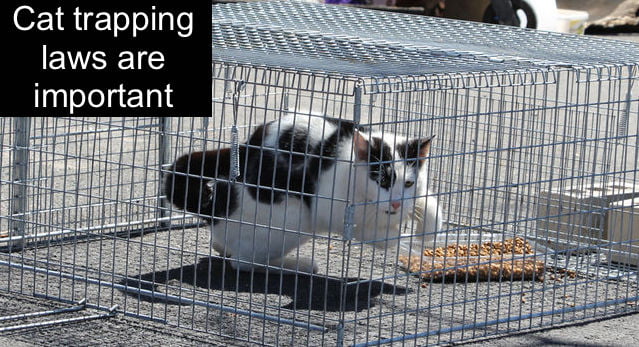Ulster County, NY, USA: The county has introduced some obligatory regulations (Local Law No. 9 of 2018) regarding the trapping of cats. They are designed to ensure that when cat trapping takes place it is conducted humanely and sensibly.

The ad hoc trapping of cats by individuals who dislike free-roaming cats can lead to unfortunate consequences. In the worse case scenario a neighbour’s cat can be trapped and euthanised within 24 hours resulting in legal issues and potential civil and criminal proceedings. There have been cases of domestic cats being trapped and ending up being adopted by new owners from shelters leading to arguments over ownership and civil proceedings.
The scope of Ulster County law proposed by Laura Petit was cut dramatically in order to appease objectors. It is now about notifications of cat trapping.
“I’m removing any reference to relocating cats, ear tipping, TNR (trap-neuter-release) to make it truly only a notification law,”
The law protects family pets and feral cats from being euthanised or adopted out.
In brief these are the regulations on cat trapping (source: dailyfreeman.com):
- Anyone (organisations of individuals) carrying out cat trapping must inform the clerk and the citizens in the municipality where the trapping is to take place. A notice must be posted at the offices, and residents within 1,000 feet of where the trapping takes must also be warned five days prior to the trapping.
- The notice must provide information on where the traps will be and contact details of the people to inform when a cat is trapped.
- Worryingly, the new law allows a non-veterinarian to euthanise trapped cats.
- Scanning for microchips must be carried out with 24 hours of being trapped.
- There must be a seven day holding period for each non-ear tipped cat. Note: for those who are unsure an ear-tipped cat is one who has been through the TNR process. They are feral or semi-feral.
- There must be appropriate record keeping of the trapping operation.
Laws governing cat trapping are important in the interests of animal welfare as they help to stop abuses and inhumane outcomes due to carelessness.

These laws set forth seem confusing.
One one hand, it reads that they don’t apply to TNR’d cats; but, then, I don’t understand this “For those who are unsure an ear-tipped cat is one who has been through the TNR process. They are feral or semi-feral.” Why would anyone question whether an ear-tipped cat had been TNR’d? Ofcourse they were.
However, microchipping should be of foremost importance to any TNR group, but some are still falling short.
Hey Michael, happy birthday!
Albert thanks a lot but it is not my birthday yet 🙂 It’s on 20th December. I hope you are well.